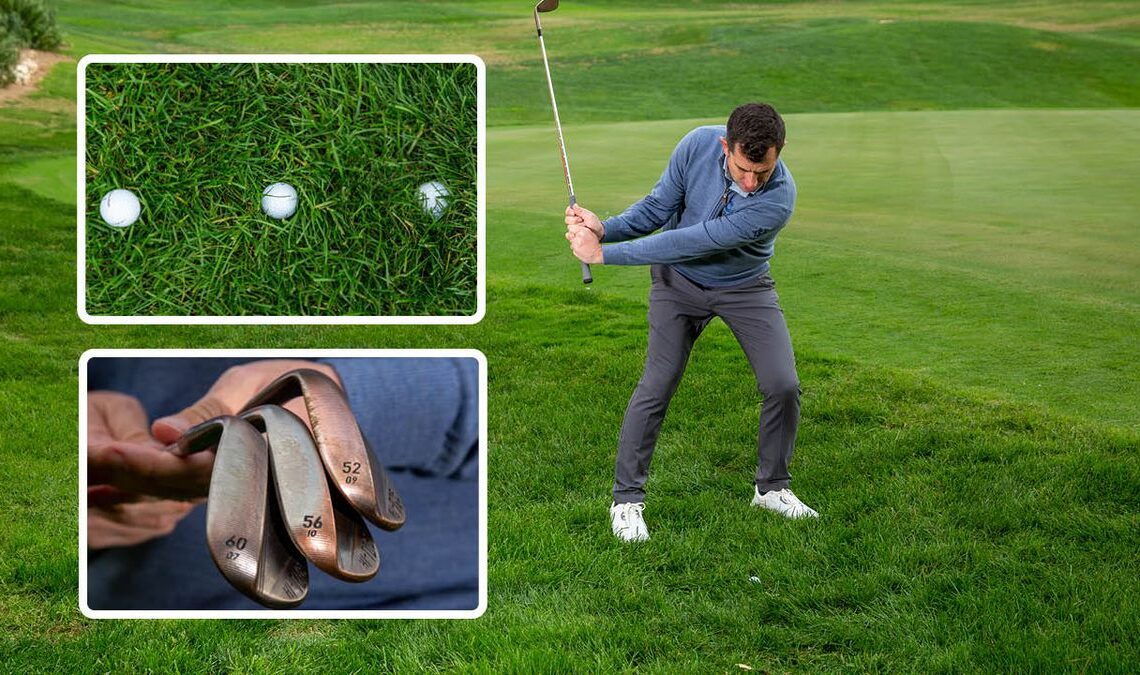We have all seen an example of this on the television, where one of the world’s best golfers arrives to a difficult lie around the green and proceeds to seamlessly extract it and spin the golf ball perfectly to the hole.
This is something tour pros do well, but it certainly isn’t as easy as they make it look. Judging lies in the rough is a skill that needs practice, so we asked Golf Monthly Top 50 Coach Dan Grieve to share his top tips to get you onto the green and out of trouble…
How To Read Lies In The Rough Around The Green
In the video above, I have set-up three different lies around the green. Number one is where the ball is sitting up right on top of the grass, which is very easy to go underneath it. The second is the most common, nestled down slightly with perhaps just the top of the ball being visible. The final lie is really buried down in the thick stuff, which is almost impossible to see and can be daunting for amateur golfers.
If you approach all three shots with the same technique, you will probably play one of them well and the others might well take two to get onto the green. The key is to understand how to make small adaptions, so that you have the versatility and angle of attack to still make the contact you need to get the ball close.
Ball Sitting Up On Top Of The Rough
(Image credit: Howard Boylan)
For this shot, I would recommend you use a little less loft, such as a gap wedge, as the straighter face will reduce the chances of the ball riding up the grooves and the club sliding straight underneath it.
Setup with a narrow stance, with a chip-and-run-style technique, and make sure not to have any wrist action in the swing as I don’t want to go under the ball and hit too high up the face at the crucial moment.
Try to catch it on that third of fourth groove of the clubface and the ball should wander nicely down towards the hole.
Ball Partially Nestled In The Rough
(Image credit: Howard Boylan)
If I were to use that same technique for this lie, which is a very shallow angle of attack, the grass is going to start grabbing the club behind the ball and by the time the club reaches the ball it will have very little energy left – meaning the ball will end up a few feet in front of you.
Instead, use a little bit more loft, like a sand wedge, and stand a little bit…
..
Click Here to Read the Full Original Article at Golf Monthly…
